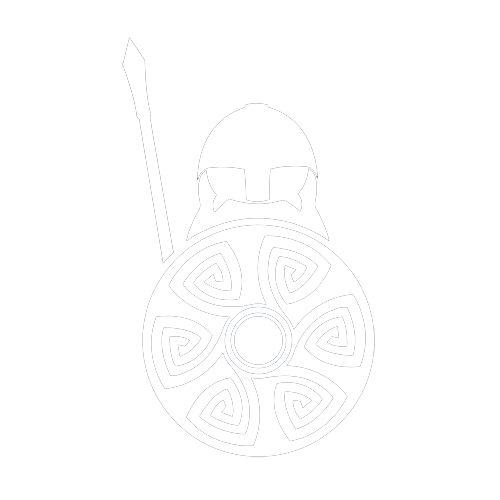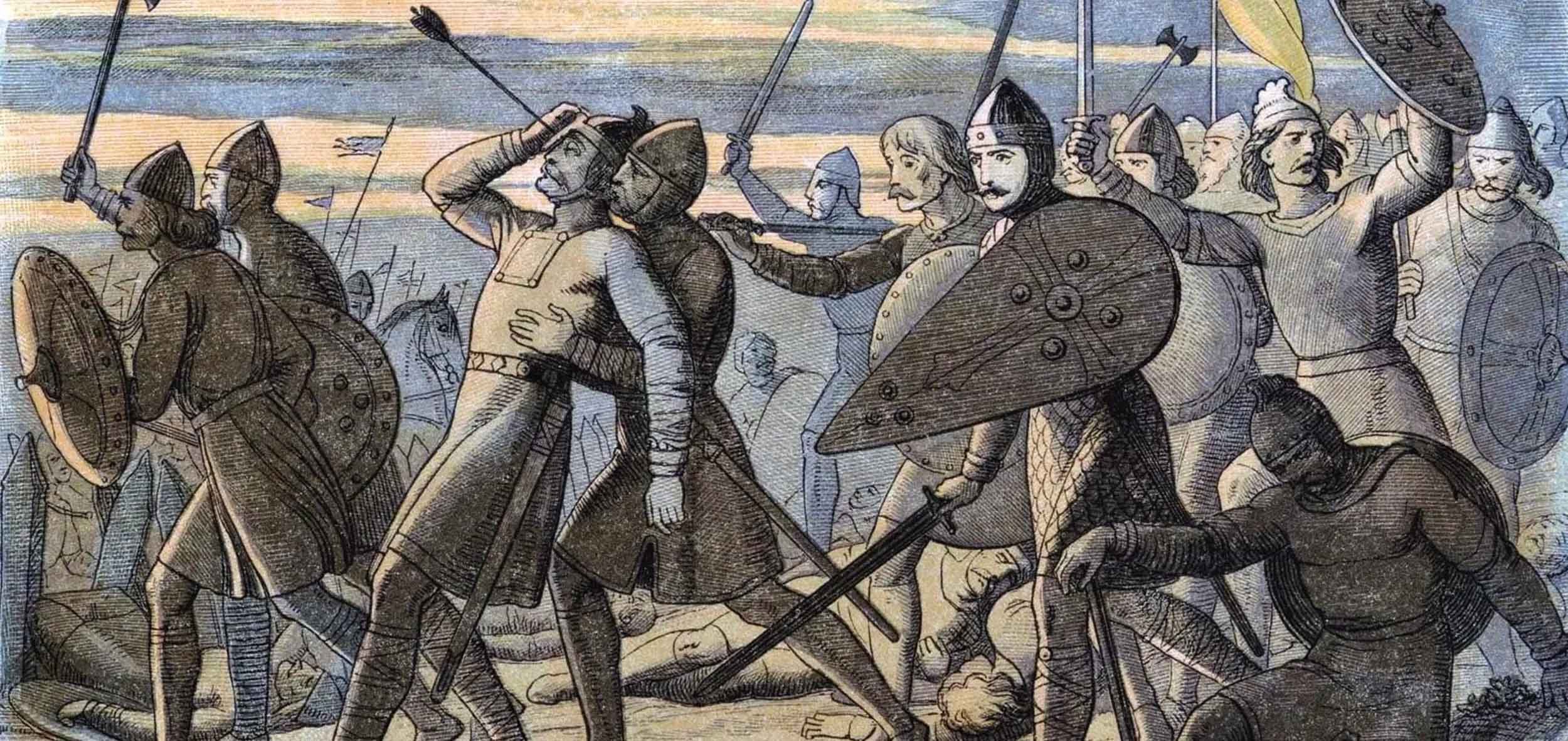Harold Godwinson the Last Anglo-Saxon King
Harold Godwinson, a wealthy, powerful man who inherited money and titles from his father, Godwin Earl of Wessex, upon his death in 1053. Harold Godwinson dedicated his life to serving King Edward the Confessor unreservedly, soon becoming indispensable to the King. Then, when Edward died in 1066, Harold was very quickly crowned king. However, as history now bares its scars, Harold Godwinson's reign would not last long.
Getty Images
| Born | 1022, Wessex |
| Parents | Godwin Earl of Wessex and Gytha of Denmark |
| Married | Edith Swan-Neck |
| Children | 7, Godwin, Edmund, Magnus, Gunhild, Gytha, Harold and Ulf |
| Died | 14 October 1066, Battle of Hastings (44) |
| Reign | 1066 (10 months) |
| Crowned | 6 January 1066, Westminster Abbey (44) |
| Predecessor | Edward the Confessor |
| Successor | William I the Conqueror |
| House | Godwin |
Life Events of King Harold II Godwinson
1022
Harold is born to Godwin, Earl of Wessex and Gytha Thorkelsdóttir.
1045
Harold marries Edith Swannesha, also known as Edith the Fair or Edith of Mercia. She was Harold's longtime mistress before becoming his wife.
1066
On 6 January, just a day after Edward the Confessor's death, Harold is crowned as the King of England at Westminster Abbey. He quickly assumes the throne to assert his claim and face the challenges that lay ahead.
1066
On 25 September, Harold faces an invasion from King Harald Hardrada of Norway and his own brother, Tostig, who seek to claim the English throne. Harold defeats Hardrada's forces at the Battle of Stamford Bridge near York, securing a major victory for England.
1066
Shortly after the Battle of Stamford Bridge, Harold faces another invasion on 14 October. This time from William, Duke of Normandy (later known as William the Conqueror). The decisive Battle of Hastings takes place at Battle, Sussex. Harold's forces are defeated.
1066
King Harold II Godwinson is killed in the Battle of Hastings.
Interesting Facts About King Harold II Godwinson
Rise to Power
Harold Godwinson came from a powerful noble family. His father, Godwin, was the Earl of Wessex, and his brother, Tostig, was an earl as well. Through his family's influence, Harold climbed the ranks and eventually became the King of England.Short Reign
Harold's reign as King of England lasted for less than a year. He ascended to the throne in January 1066 and died in the Battle of Hastings on October 14, 1066.Claim to the Throne
Harold claimed the English throne after the death of King Edward the Confessor, who allegedly named him as his successor on his deathbed. However, his claim was challenged by both William, Duke of Normandy and Harald Hardrada of Norway.Defeat of Harald Hardrada
Harold achieved a significant military victory at the Battle of Stamford Bridge. He defeated Harald Hardrada's invading forces, ending the Norwegian threat and establishing his prowess as a military leader.Battle of Hastings
The Battle of Hastings is one of the most famous battles in English history. Harold's forces were ultimately defeated, and he was killed in the battle. This battle marked the beginning of Norman rule in England.Bayeux Tapestry
The Bayeux Tapestry, an intricate embroidered cloth, depicts the events leading up to the Norman Conquest, including Harold's defeat at the Battle of Hastings. It is a valuable historical artifact that provides visual documentation of this significant period.Alleged Oath to William
According to some accounts, Harold swore an oath of allegiance to William the Conqueror prior to the Battle of Hastings. The oath supposedly took place when Harold was shipwrecked in Normandy years earlier. The oath became a subject of debate and controversy during the events leading up to the battle.Burial Place
After his death at the Battle of Hastings, Harold's body was reportedly mutilated. However, his mistress, Edith Swan-neck, was able to identify him by certain marks on his body. He was eventually buried at Waltham Abbey, though the exact location of his grave is uncertain.
Battles Fought By King Harold II
Battle of Fulford
On 20 September 1066, this battle took place near the village of Fulford, near York, during the Viking invasion of England led by Harald Hardrada of Norway. Harold II's forces, led by Earls Edgar and Morcar, were defeated by Harold’s own brother, Tostig and Harald Hardrada.Battle of Stamford Bridge
On 25 September 1066, following the Battle of Fulford, Harold II quickly marched his forces north to confront the victorious Vikings. The battle took place at Stamford Bridge, near York, and resulted in a decisive victory for Harold II's forces. Harald Hardrada and Tostig were both killed, effectively ending the Viking threat.Battle of Hastings
On 14 October 1066, the most famous battle associated with Harold II, this conflict defined his reign and the events surrounding the Norman Conquest. Harold II faced the invading Norman forces led by William the Conqueror. The battle occurred near Hastings and ended in a victory for the Normans. Harold II was killed during the battle, leading to the establishment of Norman rule in England.
FAQs About the King
Who was King Harold II Godwinson?
King Harold II Godwinson was the last Anglo-Saxon king of England. He reigned from January 1066 until his death in the Battle of Hastings in October 1066.How did Harold Godwinson become the King of England?
Harold Godwinson became the King of England after the death of King Edward the Confessor in January 1066. He claimed the throne based on his alleged designation as Edward's successor.What happened to King Harold II's body after the Battle of Hastings?
After the Battle of Hastings, King Harold II's body was reportedly mutilated. However, his mistress, Edith Swan-neck, was able to identify him by certain marks on his body. He was eventually buried at Waltham Abbey, though the exact location of his grave is uncertain.Did Harold II have any descendants?
Harold II was married to Edith Swan-neck, but they did not have any children. After Harold's death, his lineage and family were largely overshadowed by the Norman Conquest.Did Harold II have any rivals for the English throne?
Yes, Harold II faced multiple challengers for the English throne. The most prominent were William, Duke of Normandy, who invaded England and eventually became William the Conqueror and Harald Hardrada, King of Norway, who also sought to claim the English crown.
Further Reading
Harold Godwinson, now King Harold II, did not succeed Edward the Confessor without challenges. Edmund Ironside's grandson, Edgar the Atheling, had a very strong claim to the English throne, but was very young. Furthermore, both King Harald Hardrada of Norway and, of course, William of Normandy (Edward the Confessor's cousin) both had their own claims too. William was defiant in his belief that Harold Godwinson had sworn an oath to defend his rights to the crown.
Harold II was a proven leader and a superb general, and was always the favourite from the beginning, despite these other claims. He already had a huge backing from powerful nobles, and solid pedigree from his ancestral past. Moreover, he knew how the realm worked, Harold II had never been more ready.
King Harold II faced further problems from within his own family though, specifically from his brother Tostig. Tostig was given the Earldom of Northumberland after the death of their father, Godwin. However, he did not manage the earldom well, and was eventually banished from Northumberland. Harold decided to replace Tostig with a more dependable replacement, which inevitably caused friction between the brothers.
In a move to strengthen Harold's alliance with the northern kingdoms, he chose to marry Edith (this was his second marriage), daughter of the Earl of Mercia. However, one month after the famous siting of Haley's comet, in April 1066, Tostig attacked England's south coast. His attempt was unsuccessful though, and attempted a second attack in Northumbria. Failing on both counts, Tostig needed an alliance with someone who could bolster his army, and King Harald Hardrada took up the offer.
Battle of Stamford Bridge
In September 1066, Tostig and Harald Hardrada, with 300 ships, sailed up the river Ouse looking to launch an offensive. To their surprise, at Stamford Bridge, King Harold II intercepted them early and attacked. Harold II's military prowess, along with his well trained army destroyed Tostig and Hardrada, in what was one of the most renowned victories over the Vikings, the now famous Battle of Stamford Bridge.
Fresh from his great victory, King Harold II was given devastating news. While he was busy fighting off his brother and the Vikings, William of Normandy had been assembling a vast army in Northern France and had sailed across the channel to the Sussex coast. Harold, who had anticipated a possible attack from William, had been camped on the south coast just days earlier with his army. But, with little evidence that William was even coming, Harold had decided to move off back to London (where on route he intercepted Tostig and Hardrada).
Harold Godwinson - Battle of Hastings 1066
So Harold II now had to swiftly march south again, to confront this new invasion. William had moored up in Pevensey Bay, bringing with him 500 ships, and moved on foot to Hastings. Harold II had reached a hill (now known as the town of Battle in Sussex), where swamps and bogs lay either side of a narrow pass down to where William and his Norman army stood. Harold's army vastly outnumber William's, and his army were on higher ground, so the odds were in Harold's favour. But they had marched for days, and were still weary from the previous battle.
The two armies advanced and the Battle of Hastings began. After a full day of devastating violence, King Harold II was killed when a chance arrow hit him in the eye (although this is now disputed). The battle was over, and William of Normandy was now King of England. William of Normandy would now be know as William the Conqueror (or to some, William the Bastard!)
This was the last successful foreign invasion of Britain. In Bayeux, Normandy, William's half-brother Odo, the Bishop of Bayeux, ordered a huge 70m tapestry to be made in honour of William's victory at the Battle of Hastings.
Related Videos to the King
The Anglo-Saxon Kings of England


